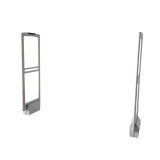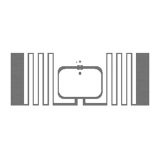When it comes to implementing RFID technology, choosing the best RFID module is an essential decision. An RFID module serves as the crucial link between the RFID system and the objects or assets being tracked or managed. With so many options available in the market, it can be overwhelming to determine which module would best suit your needs. This guide will walk you through the key factors to consider when choosing the perfect module. So, let’s discover the ultimate guide to choosing your RFID module!
What is an RFID Module?
An RFID module is a compact device that integrates the necessary components for RFID communication. It typically includes an RFID chip, an antenna, and a communication interface. The RFID chip is responsible for storing and transmitting data, while the antenna enables wireless communication with RFID tags. The communication interface allows seamless integration with other systems or devices, such as a computer or a microcontroller. Essentially, it acts as the brains of an RFID system, enabling the exchange of information between tags and the central system.
Factors to Consider When Choosing an RFID Module
Selecting the right RFID module is crucial for successful implementation of RFID technology. Various factors must be carefully considered to ensure compatibility, functionality, and efficiency. This section will explore key considerations to help you make informed decisions when choosing the module.
Frequency:
RFID technology operates at different frequencies, and it’s crucial to select an RFID module that aligns with the frequency supported by your RFID tags. The common frequencies used in RFID systems include low frequency (LF), high frequency (HF), and ultra-high frequency (UHF). Each frequency has its advantages and limitations, so consider the specific requirements of your application and choose the appropriate frequency.
Read range:
The read range of an RFID module refers to the distance at which it can effectively communicate with RFID tags. Depending on your application, you may require a short-range or long-range module. Factors such as the size of the tag antenna, the power output of the module, and environmental conditions can affect the read range. It’s essential to evaluate the read range specifications of different RFID modules and select one that provides adequate coverage for your needs.
Power requirements:
They can operate on different power sources, including battery-powered or externally powered. Consider the power constraints of your application and choose an RFID module that aligns with your power requirements. Battery-powered modules offer portability but may require frequent battery replacements or recharging. On the other hand, externally powered modules provide continuous operation but may have limitations for mobile or remote applications.

Data transfer rate:
The data transfer rate of an RFID module determines how quickly it can exchange information with RFID tags. If your application involves high-speed scanning or real-time data processing, you would need a module with a fast data transfer rate. Evaluate the data transfer specifications of different modules and select one that can meet the demands of your application.
Interface compatibility:
Consider the interface compatibility of the RFID module with your existing systems or devices. Common interface options include USB, RS232, and Ethernet. Ensure that it has compatible communication ports or protocols to seamlessly integrate with your system.
Durability and environmental conditions:
Depending on the intended application, the module should be able to withstand environmental factors such as temperature, humidity, and dust. Evaluate the ruggedness and durability of different RFID modules, especially if they will be deployed in challenging environments.
Cost:
While cost should not be the sole determinant, it is an important consideration when choosing an RFID module. Evaluate the pricing of different modules and consider the overall value they provide regarding features, performance, and durability. Strike a balance between your budget and the desired functionality to make a cost-effective decision.
Vendor support and reputation:
Opt for reputable vendors who offer reliable support and have a positive reputation in the industry. Look for vendors that provide technical assistance, documentation, and warranty options, as these can greatly impact your overall experience.
Conclusion
Choosing the best RFID module involves considering a combination of factors such as frequency, read range, power requirements, data transfer rate, interface compatibility, durability, cost, and vendor support. By carefully evaluating each of these factors, you can select a module that aligns with your requirements and maximizes the potential of RFID technology in your application. Remember to do thorough research, compare different options, and seek expert advice if needed. With the right RFID module in place, you can unlock the benefits of efficient and accurate asset tracking, inventory management, and security in your business operations.
FAQs
1. What is an RFID module?
An RFID module is a compact electronic device that integrates RFID reader circuitry and antenna. It communicates wirelessly with RFID tags to read and transmit data. When an RFID tag comes into proximity, the module emits radio waves to activate the tag, allowing for data exchange.
2. What is the purpose of an RFID module?
They find applications in various industries, including inventory management, access control, asset tracking, apparel security, and logistics. They are used to track and manage items, monitor supply chains, control access to restricted areas, and streamline processes.
3. How do I choose the right RFID module for my application?
Consider factors such as frequency compatibility, read range, data transfer rate, power requirements, and interface options. Assessing your specific application needs and requirements will help determine the most suitable RFID module for your project.
4. Can RFID modules be integrated into existing systems?
Yes, they are designed for integration into various systems and devices. They often come with standard communication protocols and interfaces, making it relatively easy to integrate them into existing hardware or software solutions. Additionally, many RFID modules offer software development kits (SDKs) for further customization and integration capabilities.


































